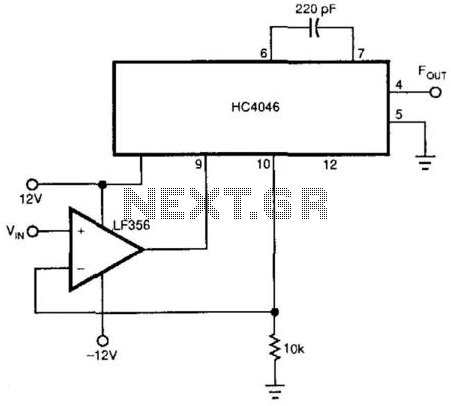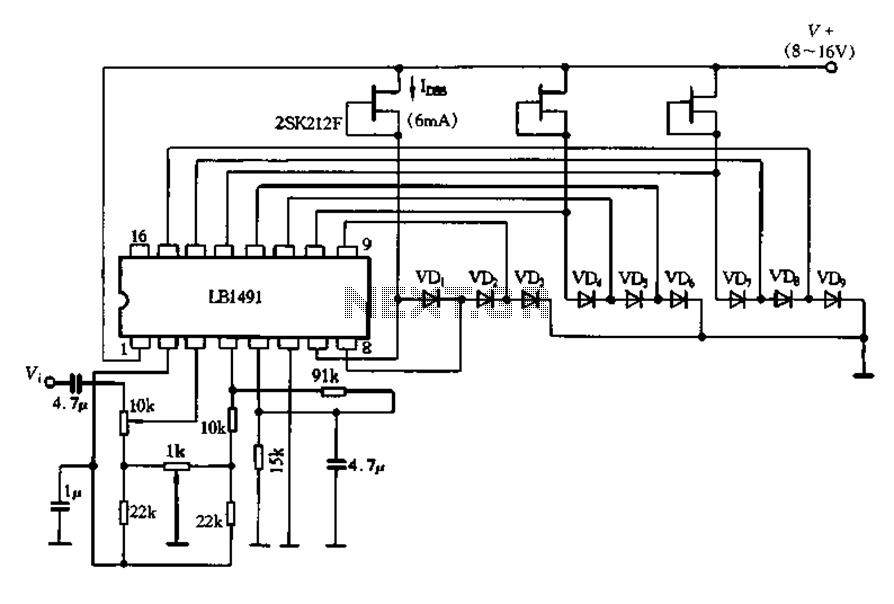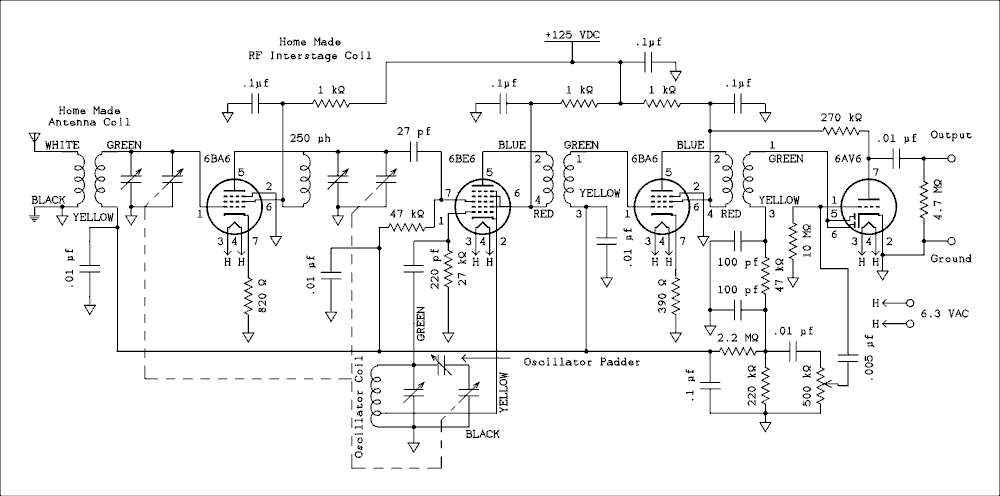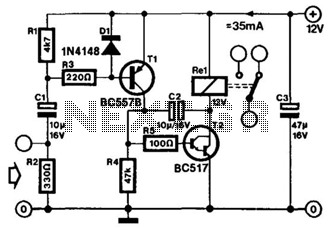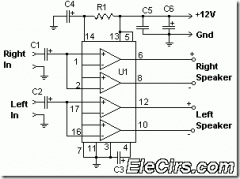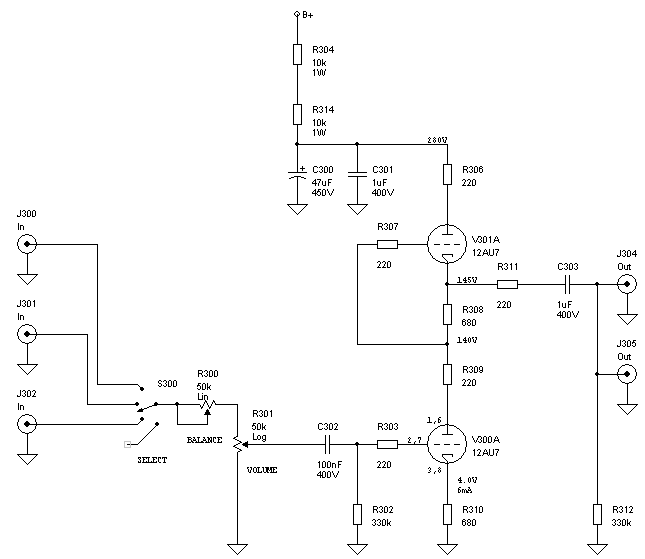
Vacuum tube VCO
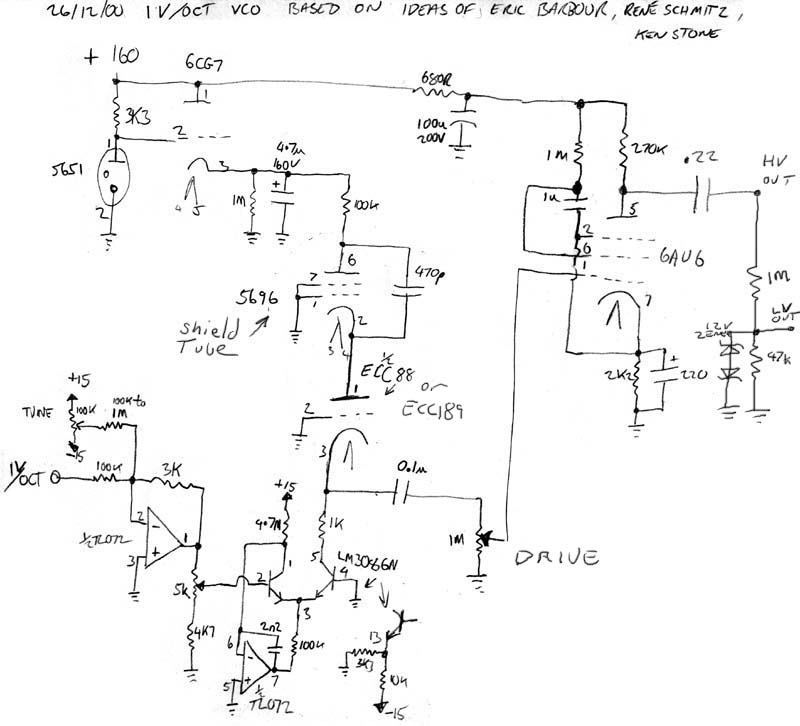
Experimenting with a vacuum tube voltage-controlled oscillator (VCO) similar to the one in the provided link, but with modifications to accommodate available components. A cascode arrangement is utilized instead of the 6AU6, and a 2D21 thyratron replaces the 5696. The circuit produces a satisfactory sawtooth wave that tracks well; however, there is disappointment regarding the tuning range, particularly at the lower frequencies. The minimum frequency achievable is approximately 250 Hz, and adjusting the capacitor across the thyratron does not yield any improvement. The ECC88 grounded-grid amplifier appears to cease conduction when the tube current drops below approximately 25 microamps, leading to the cessation of oscillation. The first circuit on the referenced page by K. Giannopoulos was adjusted to extend the frequency range to both lower and higher ends by modifying the 100k potentiometer and the control voltage input. Constructing a single VCO may present challenges, as the 100k potentiometer cannot be reset during note play. In this instance, a second schematic is being developed, incorporating 60 such VCOs for a 60-voice polyphonic system.
The vacuum tube voltage-controlled oscillator (VCO) circuit described employs a cascode configuration that enhances performance by providing improved gain and bandwidth while minimizing feedback capacitance. The use of a 2D21 thyratron as a frequency-determining element allows for the generation of a sawtooth waveform, a common requirement in synthesizer applications for its linear rise and abrupt fall characteristics.
The tuning range limitation observed, particularly at the lower frequency end, is attributed to the design constraints of the circuit. The inability to achieve frequencies lower than 250 Hz may be due to the characteristics of the thyratron and the specific configuration of the ECC88 grounded-grid amplifier. The ECC88 operates in a manner that restricts conduction at low tube currents, which can lead to oscillation failure. The solution may involve reassessing the component values or exploring alternative configurations that allow for lower frequency operation without compromising the stability of the waveform.
In the context of polyphonic synthesizer design, the implementation of multiple VCOs necessitates careful consideration of the control voltage (CV) inputs and the tuning mechanisms. The use of a 100k potentiometer provides a means to adjust the frequency, but the challenge arises when attempting to play notes dynamically, as the potentiometer cannot be easily reset during performance. This limitation emphasizes the importance of designing a user-friendly interface for real-time adjustments, particularly in a system with 60 VCOs.
To optimize the performance of the VCOs, further experimentation with component values, including the adjustment of capacitors and resistors in the feedback loop, may yield improvements in frequency response and stability. Additionally, exploring alternative tube types or configurations could provide enhanced performance characteristics. The goal of achieving a robust and versatile polyphonic synthesizer will require iterative testing and refinement of the circuit design to meet the desired specifications.Experimenting with a vacuum tube VCO similar to the one in the link below, but with a few modifications to accommodate the parts I had on hand; I`m using a cascode arrangement instead of the 6AU6 and a 2D21 thyratron in lieu of the 5696. The circuit really does produce a nice sawtooth wave that tracks well, however I am a bit disappointed by
the tuning range, particularly on the low end. The lowest frequency I can coax out of the circuit is about 250 Hz, and increasing the size of the capacitor across the thyratron doesn`t seem to make any difference. The ECC88 grounded-grid amp seems to drop completely out of conduction and oscillation stops when the tube current tries to go below about 25 microamps.
I have the first circuit on this page K. Giannopoulos official site and I was able to extend the range to the very low ends as well to the highs by adjusting the 100k pot as well as the CV in. If you build just one vco there may be a problem, as you cannot re-set the 100k as you play the notes.
In my case I am building the second schematic with 60 such vcos for a 60-poly 🔗 External reference
The vacuum tube voltage-controlled oscillator (VCO) circuit described employs a cascode configuration that enhances performance by providing improved gain and bandwidth while minimizing feedback capacitance. The use of a 2D21 thyratron as a frequency-determining element allows for the generation of a sawtooth waveform, a common requirement in synthesizer applications for its linear rise and abrupt fall characteristics.
The tuning range limitation observed, particularly at the lower frequency end, is attributed to the design constraints of the circuit. The inability to achieve frequencies lower than 250 Hz may be due to the characteristics of the thyratron and the specific configuration of the ECC88 grounded-grid amplifier. The ECC88 operates in a manner that restricts conduction at low tube currents, which can lead to oscillation failure. The solution may involve reassessing the component values or exploring alternative configurations that allow for lower frequency operation without compromising the stability of the waveform.
In the context of polyphonic synthesizer design, the implementation of multiple VCOs necessitates careful consideration of the control voltage (CV) inputs and the tuning mechanisms. The use of a 100k potentiometer provides a means to adjust the frequency, but the challenge arises when attempting to play notes dynamically, as the potentiometer cannot be easily reset during performance. This limitation emphasizes the importance of designing a user-friendly interface for real-time adjustments, particularly in a system with 60 VCOs.
To optimize the performance of the VCOs, further experimentation with component values, including the adjustment of capacitors and resistors in the feedback loop, may yield improvements in frequency response and stability. Additionally, exploring alternative tube types or configurations could provide enhanced performance characteristics. The goal of achieving a robust and versatile polyphonic synthesizer will require iterative testing and refinement of the circuit design to meet the desired specifications.Experimenting with a vacuum tube VCO similar to the one in the link below, but with a few modifications to accommodate the parts I had on hand; I`m using a cascode arrangement instead of the 6AU6 and a 2D21 thyratron in lieu of the 5696. The circuit really does produce a nice sawtooth wave that tracks well, however I am a bit disappointed by
the tuning range, particularly on the low end. The lowest frequency I can coax out of the circuit is about 250 Hz, and increasing the size of the capacitor across the thyratron doesn`t seem to make any difference. The ECC88 grounded-grid amp seems to drop completely out of conduction and oscillation stops when the tube current tries to go below about 25 microamps.
I have the first circuit on this page K. Giannopoulos official site and I was able to extend the range to the very low ends as well to the highs by adjusting the 100k pot as well as the CV in. If you build just one vco there may be a problem, as you cannot re-set the 100k as you play the notes.
In my case I am building the second schematic with 60 such vcos for a 60-poly 🔗 External reference
